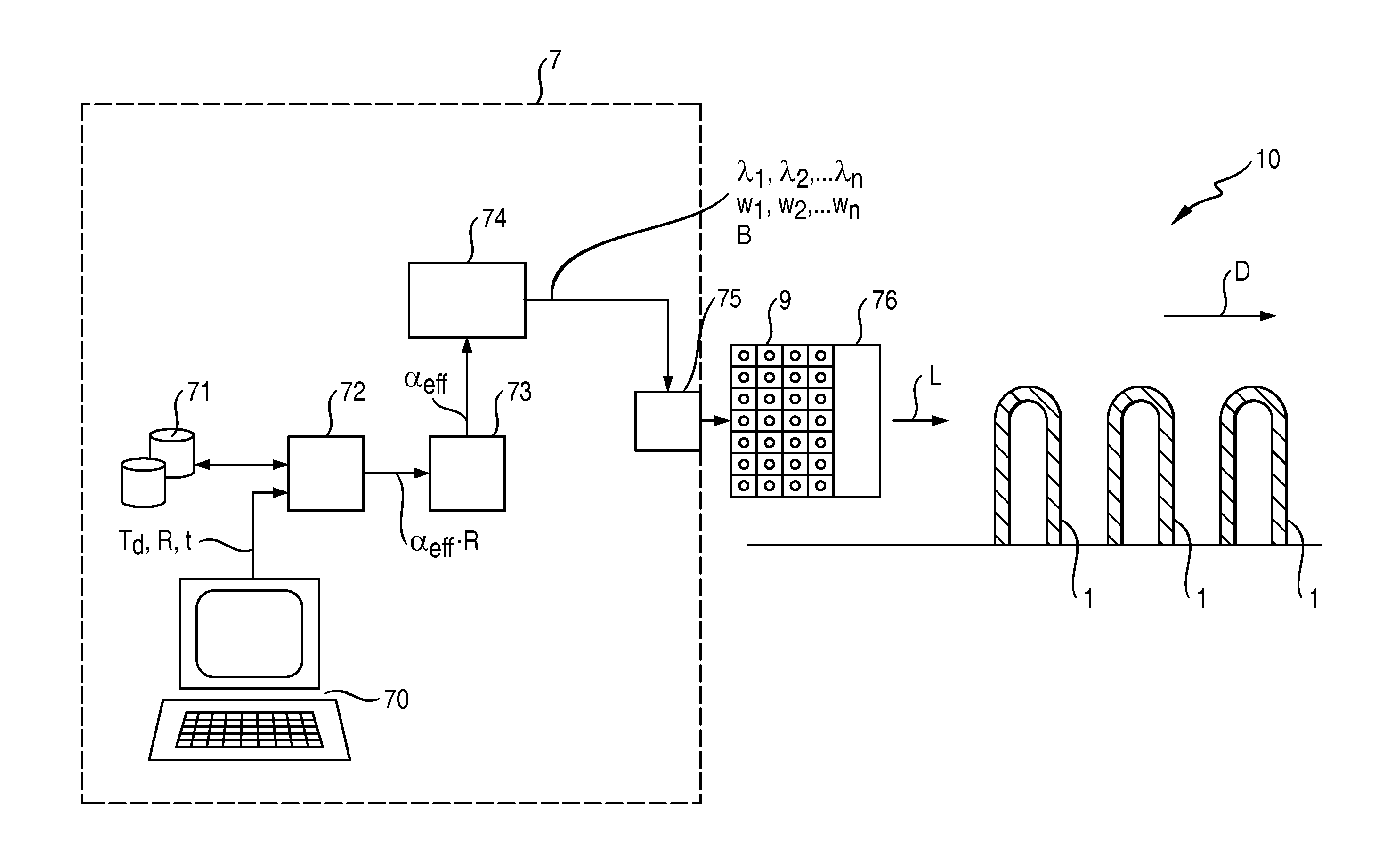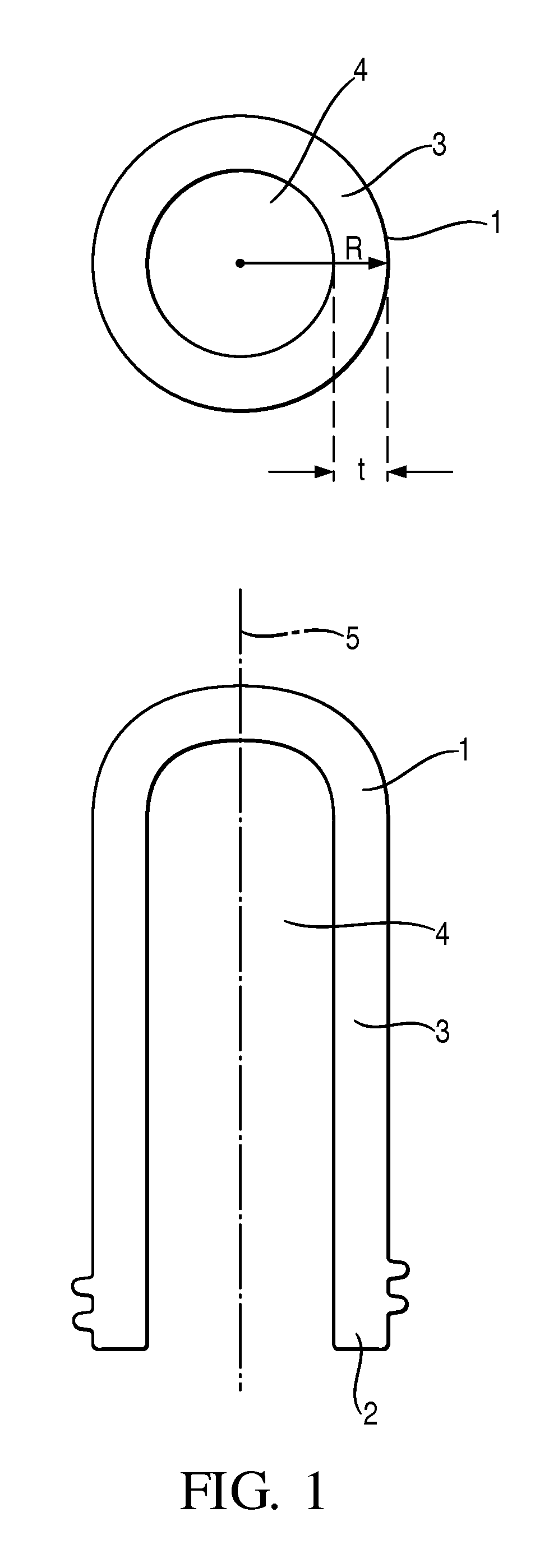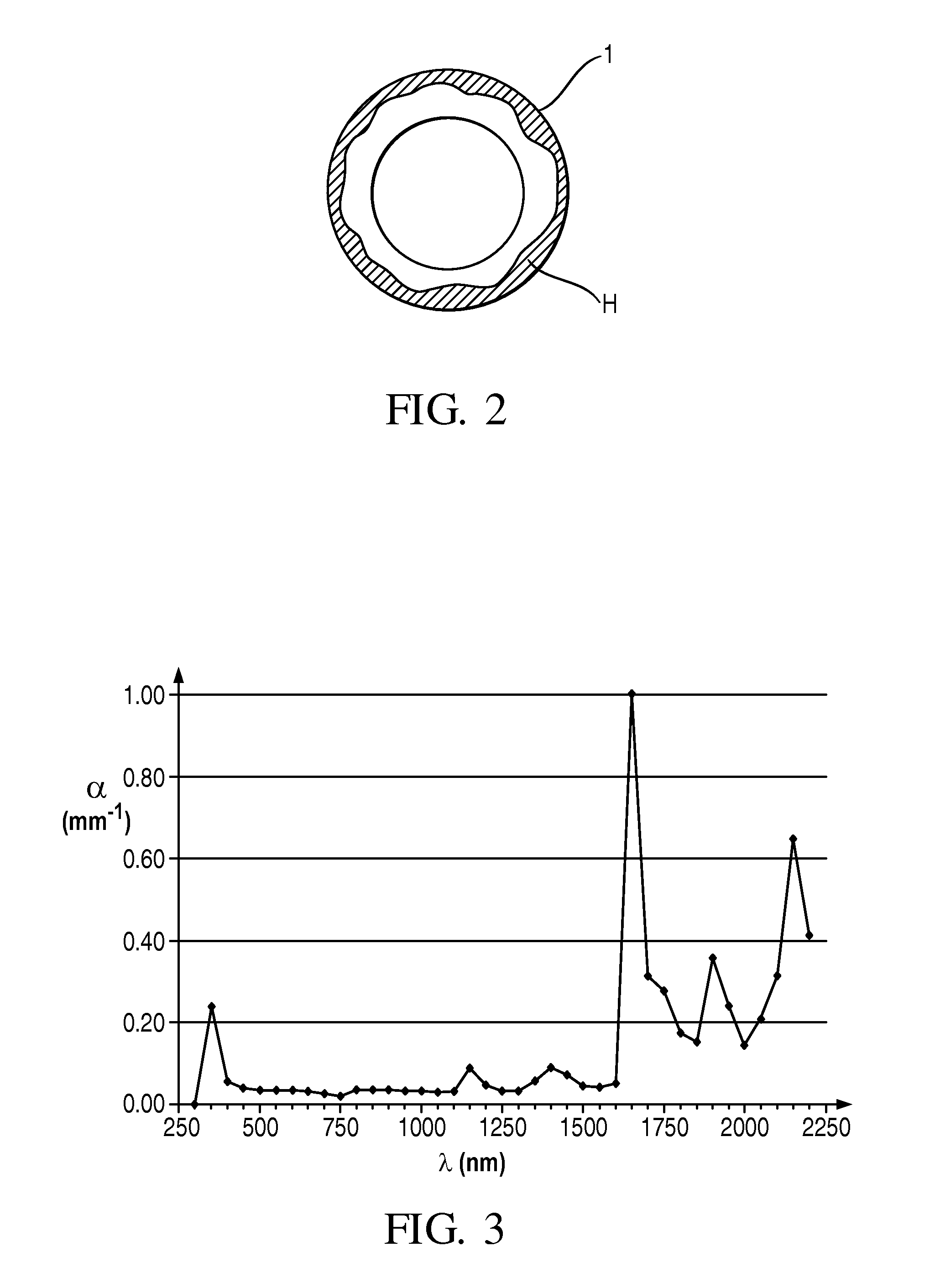Method of heating a preform, a driving arrangement, a preform heating system and a computer program
a preform and driving arrangement technology, applied in the field of heating a preform, can solve the problems of limited energy efficiency, poor energy efficiency, and the inability to effectively direct or focus radiation emitted by halogen lamps, and achieve the effect of reducing the number of halogen lamps
- Summary
- Abstract
- Description
- Claims
- Application Information
AI Technical Summary
Benefits of technology
Problems solved by technology
Method used
Image
Examples
Embodiment Construction
[0052]FIG. 1 shows a transverse cross-section and a longitudinal cross-section through the body 3 of a preform 1. Such a preform 1, intended for use as a beverage container or bottle, already features a threaded neck 2, which, contrary to the body 3 of the preform 1, is usually not subjected to any heating and thus remains largely unaffected by the subsequent blow-moulding of the heated preform body 3. The cavity 4 of the preform 1 can be used to fixate the preform 1 during its path through the oven or furnace, as a bottle-blowing apparatus is usually termed, for example by a rod or pin upon which the preform is placed. While being heated, the preform may be rotated about its longitudinal axis 5. When heated in the oven, the body 3 of the preform 1 becomes hot and softens as a result, so that, in a subsequent treatment step, air forced into the cavity 4 of the preform 1 under a certain pressure causes the preform body 3 to expand. Suitable shaping means external to the preform 1 may...
PUM
| Property | Measurement | Unit |
|---|---|---|
| temperature | aaaaa | aaaaa |
| wavelengths | aaaaa | aaaaa |
| wavelengths | aaaaa | aaaaa |
Abstract
Description
Claims
Application Information
 Login to View More
Login to View More - R&D
- Intellectual Property
- Life Sciences
- Materials
- Tech Scout
- Unparalleled Data Quality
- Higher Quality Content
- 60% Fewer Hallucinations
Browse by: Latest US Patents, China's latest patents, Technical Efficacy Thesaurus, Application Domain, Technology Topic, Popular Technical Reports.
© 2025 PatSnap. All rights reserved.Legal|Privacy policy|Modern Slavery Act Transparency Statement|Sitemap|About US| Contact US: help@patsnap.com



